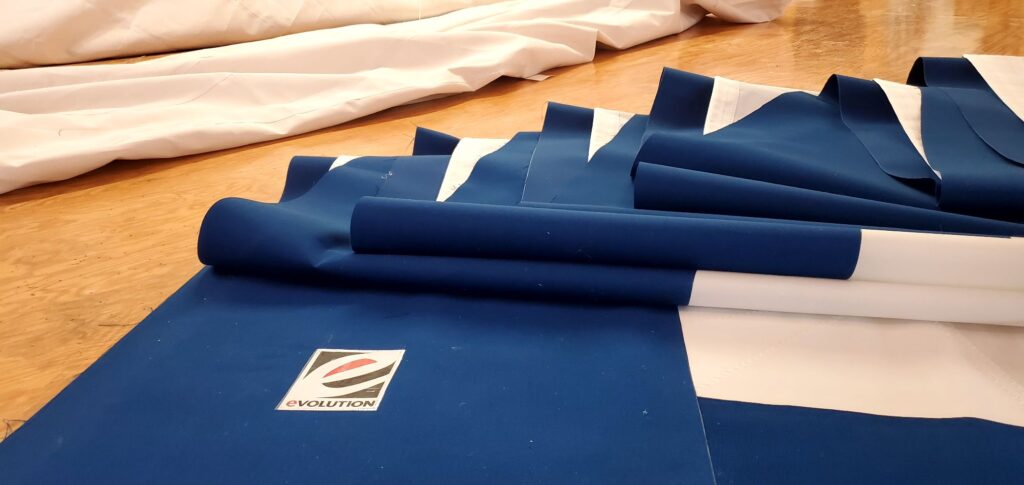By: Andy Camarda
Overview
Dacron is a woven polyester fabric that has been the standard for sail materials for decades. It offers a balance of affordability, durability, and ease of use, making it ideal for cruising and club racing sails. Dacron is made by spinning polyester fibers into high-strength yarns, which are then woven into cloth. This fabric is treated with heat, pressure, and resin coatings to stabilize the weave and enhance shape retention. Different fibers, finishing processes, and weave patterns create a wide variety of Dacron sailcloths, each tailored to specific applications and boat types.
Types of Dacron Sailcloth
Dacron sailcloth is available in multiple variations, each designed for specific sailing needs. Fabric weight, typically measured in ounces, influences durability, handling, and performance. Heavier fabrics are used for larger boats and stronger wind conditions, providing better longevity but requiring more effort to handle.
High-performance racing Dacron uses low-stretch fibers and undergoes an extensive finishing process to create a stiff, shape-holding sailcloth. Examples include Contender Fibercon PolyKote and Dimension Polyant HTP+ finished sails.

Offshore cruising Dacron prioritizes durability, incorporating UV-resistant yarns and a softer finish to withstand long-term exposure, as seen in Challenge Fastnet and Contender Fibercon Pro Warp Tech.
For coastal and inshore cruising, balanced and economical options like Challenge Newport AP and Contender Fibercon AP offer reliability at an accessible price point.
Crosscut vs. Triradial Construction

Dacron sailcloth is designed for use in either a crosscut or triradial pattern, with different materials optimized for each. Crosscut sails use fill-oriented cloth, where the strongest fibers run across the short width of the fabric roll. This construction maximizes cost-effectiveness and durability.

Triradial sails use warp-oriented cloth, where the strongest fibers run along the length of the roll, optimizing load distribution and shape retention for more performance-oriented applications. The choice between these two constructions depends on performance goals, with crosscut sails maximizing durability and cost-effectiveness, while triradial sails enhance load distribution and shape retention.
Limitations of Dacron
- Stretch Over Time: Dacron does not maintain its shape as well as more exotic materials or composite sails. Over time, it will stretch and lose some aerodynamic efficiency.
- Load Distribution: Because it is woven, its strength follows the weave pattern. This means that while it is strongest in the primary fiber directions, it stretches more under off-axis loads.
Ideal Applications
Dacron sails are best suited for sailors who prioritize reliability, cost-effectiveness, and ease of handling. They are commonly used in:
- Coastal and Offshore Cruising: A practical choice for sailors looking for long-lasting, low-maintenance sails.
- Club Racing: While not as performance-driven as laminates, racing Dacron provides a stiffer, shape-retentive alternative for competitive sailors on a budget.
- Training and Recreational Sailing: Dacron’s forgiving nature and durability make it an excellent option for sailing schools and beginner sailors.
Get in Touch
Interested in learning more about Dacron sail materials? Our team is here to help you choose the best sail for your needs. Explore our Dacron sails or request a quote today. For more information and insights on sail materials, visit our Learning Center.
Dacron remains the go-to woven sail material for sailors seeking durability, affordability, and long-term reliability on the water.



